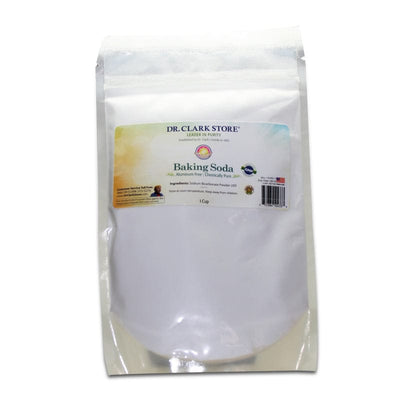Turmeric: A Nutraceutical Powerhouse

What is Curcumin?
Turmeric comes from the plant Curcuma longa, a member of the ginger family. While turmeric's medicinal properties have been recognized for thousands of years, modern studies continue to uncover the precise mechanisms and active components responsible for its effects.
Curcumin, scientifically known as 1,7-bis(4-hydroxy-3-methoxyphenyl)-1,6-heptadiene-3,5-dione, is the primary natural polyphenol found in turmeric (Curcuma longa). Traditionally, Curcuma longa has been used as a medicinal herb in various Asian countries due to its antioxidant, anti-inflammatory, antimutagenic, antimicrobial, and anticancer properties.
Health Benefits of Curcumin
Research has shown that curcumin targets multiple signaling molecules and acts at the cellular level, which explains its numerous health benefits. Curcumin has been found to help with inflammatory conditions, metabolic syndrome, pain management, and degenerative eye diseases. It has also shown benefits for kidney health. Most of these therapeutic effects are attributed to curcumin's antioxidant and anti-inflammatory properties.
A recent study explored the effects of curcumin on healthy adults aged 40 to 60. Participants were divided into two groups, with one group receiving 80 mg/day of a lipidated form of curcumin (19 people) and the other receiving a placebo (19 people) over four weeks. The treatment involved taking 400 mg of powder daily, which included 80 mg of curcumin.
Blood and saliva samples were collected before and after the study. The results showed that curcumin significantly reduced triglyceride levels, although it did not affect total cholesterol, LDL, or HDL levels. Additionally, there was a notable increase in nitrous oxide (NO) and soluble intercellular adhesion molecule 1 (sICAM), which is related to atherosclerosis.
The study also observed an increase in neutrophil function connected to inflammation, as indicated by higher myeloperoxidase concentration. However, levels of c-reactive protein and ceruloplasmin remained unchanged. Salivary amylase activity, a marker of stress, decreased, while salivary radical scavenging capacities and plasma antioxidant enzyme catalase increased.
Furthermore, the study found a decrease in beta amyloid plaque, which is associated with brain aging, and a reduction in plasma alanine amino transferase activities, indicating less liver injury. These findings suggest that even a relatively low dose of curcumin can offer health benefits for individuals without diagnosed health conditions.
Anti-Cancer
In a 2007 study curcumin was better than the standard colon cancer drug in suppressing tumor growth in rats. British oncologists performed a similar study in cancer patients with late stage colon cancer. They found that the curcumin, even in low doses, was able to reduce inflammatory markers associated with cancer by up to 60%. Another study in 2005 took cancer tissue from colon cancer patients, and found that curcumin directly acted upon and reduced DNA mutations in the malignant cells. Another 2006 study at the Cleveland Clinic, studied patients with hundreds of pre-malignant polyps, or adenomas (2). Combining curcumin and quercetin shows that every single patient saw significant reductions, up to 60%, in polyp numbers and size!
Curcumin has been found to suppress survival, invasion, angiogenesis, proliferation and metastasis of colon cancer cells through the modulation of cell signaling pathways and biomarkers, such as p53, B-cell lymphoma 2, nuclear factor-κB, and cyclin D1.
The Challenge of Bioavailability
One major issue with curcumin is its poor bioavailability, meaning it is not easily absorbed by the body. This is mainly due to rapid metabolism and quick elimination. To improve curcumin's bioavailability, several agents have been tested, both to increase time it spends in the body, and to increase the digestive ability to break it down. Piperine, an active component of black pepper, has been found to increase the bioavailability of curcumin by 2000%. Adding such agents helps create a more effective curcumin complex.
Raw or Cooked?
A debate exists regarding whether turmeric should be heated or eaten raw like carrots for its health benefits. While some studies have found that curcumin is detroyed when heated by boiling or pressure cooking, some experts like nutritionist Rupali Dutta, note that nevertheless, the reduced amount of curcumin is more bioavailable when heated. Another nutritionis, Shipla Arora, also suggests to cook with turmeric for 5-10 minutes.
Cooking releases the compounds into the cooking oil or butter, and greatly enhances their bioavailability to certain areas of the body. A popular Ayurvedic recipe based on this principle is “Golden Milk.”
Golden Milk Recipe

Ingredients:
- 1 cup of milk (dairy or plant-based such as almond, coconut, or oat milk)
- 1 teaspoon of turmeric powder
- 1/4 teaspoon of cinnamon powder
- Stevia or sweetener to taste
- Coconut oil/ ghee
Steps:
1). Combine mixture in saucepan to a light simmer, without boiling.
2). Still for 5 minutes and add sweetener, and coconut oil or ghee.
Shop for Tumeric Supplements:
Turmeric & Black Pepper, Ginger and Rosemary




Great thanks alot
Leave a comment